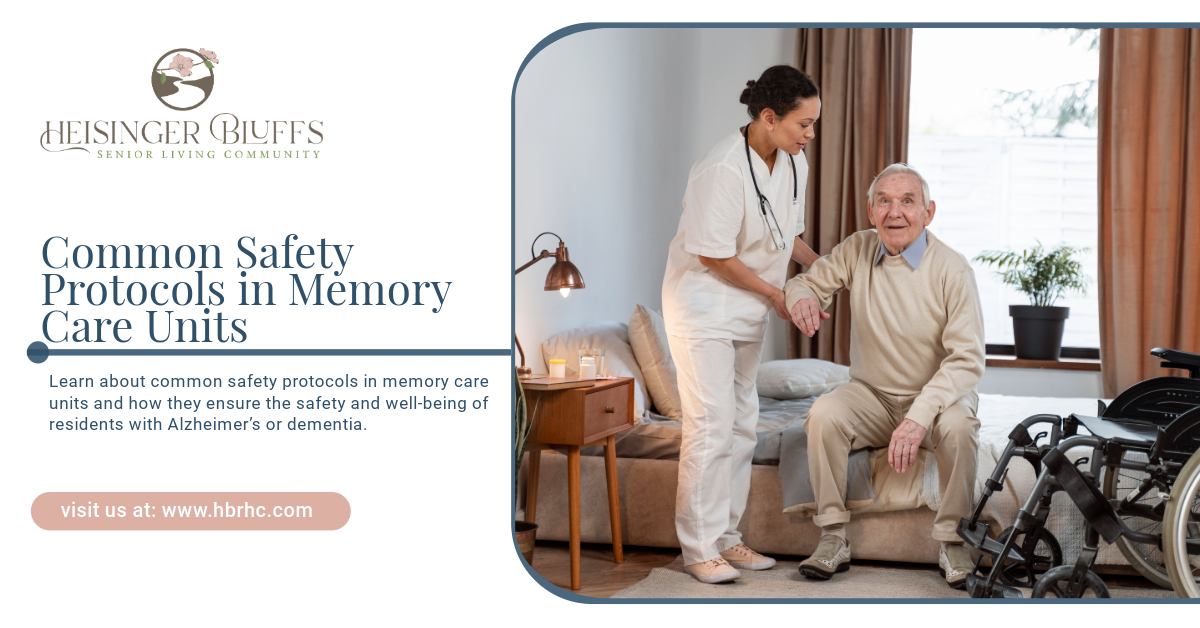Senior Living Communities: Support for Hearing and Vision Loss

How Senior Living Communities Support Residents with Hearing and Vision Loss
As individuals age, they often face sensory challenges such as hearing and vision loss. These conditions can significantly impact their quality of life, making it more difficult to engage in daily activities, communicate effectively, or maintain their independence. However, many senior living communities are equipped with resources and services designed to support residents who are experiencing sensory impairments.
In this blog post, we will explore the various ways senior living communities support residents with hearing and vision loss, ensuring that they continue to lead fulfilling and active lives. From specialized healthcare to technological innovations, senior communities are making great strides in accommodating sensory challenges and promoting independence and well-being.
Understanding the Impact of Hearing and Vision Loss in Seniors
Before diving into the specific support systems offered by senior living communities, it’s essential to understand the significance of hearing and vision loss for older adults. These sensory impairments are common, and they can vary in severity.
1. Hearing Loss in Seniors
Approximately one-third of people aged 65 and older experience some form of hearing loss. It can range from mild, where only certain sounds are harder to hear, to severe, where communication becomes significantly challenging. Hearing loss can affect social interactions, the ability to engage in activities, and even safety, as it may hinder the ability to hear important sounds such as alarms or the voices of loved ones.
2. Vision Loss in Seniors
Vision impairment also becomes more prevalent with age. Conditions like macular degeneration, cataracts, and diabetic retinopathy can all lead to decreased vision, affecting seniors' ability to navigate their environment, read, drive, or even recognize faces. This can lead to feelings of isolation and a loss of independence.
Understanding the challenges these impairments pose helps explain why senior living communities have become a vital support system for those dealing with hearing and vision loss.
How Senior Living Communities Support Residents with Hearing Loss
Senior living communities are increasingly implementing programs and services designed to assist residents with hearing loss, improving their communication and social engagement.
1. Hearing-Aid Assistance and Technology
Many senior living communities have on-site audiologists or partnerships with hearing specialists to offer hearing assessments and hearing-aid fittings. Residents can receive professional evaluations and access to high-quality hearing aids or other assistive listening devices. Some communities may even provide maintenance and repair services for hearing aids, ensuring that residents always have functioning equipment.
Additionally, senior living communities may incorporate advanced technology that helps with hearing. For example, amplified telephones, closed-captioned television, and hearing loop systems in common areas can enhance auditory experiences for residents. These technologies ensure that residents can stay connected with family, friends, and the community without feeling left out.
2. Communication Support Services
For seniors with hearing loss, effective communication can be challenging. Senior living communities can provide a variety of services to help bridge the gap, such as:
- Sign Language Interpreters: Some communities employ trained sign language interpreters or offer access to video relay services for residents who use sign language as their primary mode of communication.
- Speech Therapy: Speech therapists are available in some senior communities to help residents regain or maintain speech and communication skills that may have been impacted by hearing loss.
- Written Communication: Senior living staff members may also use written communication or visual aids to help residents better understand announcements or instructions, ensuring that they don’t miss important information.
3. Social and Recreational Activities
Social isolation is a significant concern for seniors with hearing loss, as it may be difficult to engage in group activities or conversations. Senior living communities recognize this challenge and often host activities that are designed to be more inclusive of individuals with hearing impairments. For instance, events might include visual presentations, captioned films, or group discussions with an emphasis on written communication and visual cues.
Additionally, many communities organize smaller social gatherings or one-on-one activities that provide a more comfortable environment for residents who may find large groups overwhelming due to hearing difficulties.
How Senior Living Communities Support Residents with Vision Loss
Like hearing loss, vision loss can significantly impact a senior’s ability to perform daily tasks and maintain independence. Senior living communities have implemented several strategies and services to help residents with vision impairment live comfortably.
1. Vision Assessment and Personalized Care
Most senior living communities have access to healthcare professionals who can assess a resident’s vision and recommend specific treatments or adjustments. Some communities partner with optometrists and ophthalmologists to provide routine eye exams and consultations, ensuring that residents’ vision is monitored and managed effectively.
In addition, personalized care plans can be developed to help residents navigate daily life with vision loss, including assistance with mobility, medication management, and activities of daily living (ADLs).
2. Environmental Modifications for Safety and Navigation
Senior living communities make various environmental changes to support residents with vision loss. Common accommodations include:
- High-Contrast Signage: Clear, high-contrast signs in hallways, elevators, and common areas help residents navigate the community more easily.
- Well-Lit Areas: Ensuring adequate lighting in all areas of the community reduces the risk of falls and helps residents with limited vision better navigate their surroundings.
- Adaptive Devices: Communities may offer adaptive devices such as magnifying glasses, large-print books, and text-to-speech devices to help residents engage with reading materials, social media, and other activities.
- Braille: Braille is commonly used in senior living communities on room signs, menus, and other important documents to make information more accessible to those with severe vision loss.
3. Orientation and Mobility Training
For residents who experience significant vision loss, senior living communities may provide orientation and mobility training. This program teaches individuals how to use a white cane or other mobility aids to safely navigate their environment. Staff members may also provide personalized assistance to help residents find their way around and feel more independent.
4. Technology to Assist with Vision Loss
Many senior living communities have embraced technology to help residents with vision impairments. This can include devices like:
- Smartphones and Tablets with Accessibility Features: Many devices now come equipped with voice-controlled features and screen readers, which help individuals with vision loss use smartphones, tablets, and computers.
- Voice-Controlled Devices: Smart speakers, such as Amazon Echo or Google Home, allow residents to control lights, play music, set reminders, and much more using only their voice, which is especially helpful for those with limited vision.
The Importance of a Holistic Approach to Care
While hearing and vision loss can present challenges, the key to supporting seniors with these conditions is a holistic, person-centered approach. Senior living communities strive to create an inclusive, welcoming environment where all residents can thrive, regardless of their sensory impairments.
This approach includes not only addressing the practical aspects of care—such as providing assistive devices and offering healthcare services—but also focusing on emotional support. Residents with sensory impairments often face feelings of isolation, so providing opportunities for socialization, personal growth, and recreation is just as crucial as physical care.
Community Support: A Collective Effort
Family members, caregivers, and fellow residents all play a significant role in creating an environment where seniors with hearing and vision loss can feel supported and included. It’s important to foster a culture of empathy and understanding, where all individuals are encouraged to communicate and connect with each other.
At Heisinger Bluffs, we understand the unique challenges that come with hearing and vision loss, and we work tirelessly to create a supportive and comfortable environment for our residents. Through a combination of specialized healthcare, assistive technologies, and community involvement, we strive to ensure that all residents, regardless of sensory impairments, can live their best lives in our community.
Frequently Asked Questions
How can senior living communities help with mobility for residents with vision loss?
Senior living communities provide orientation and mobility training, environmental modifications such as well-lit pathways, and personalized assistance to help residents with vision loss navigate their environment safely.
Are there assistive devices available for seniors with hearing loss in senior living communities?
Yes, many senior living communities offer a range of assistive devices, including hearing aids, amplified telephones, and hearing loop systems, to help residents with hearing loss communicate more effectively.
How can senior living communities promote socialization for residents with hearing and vision loss?
Senior living communities organize inclusive activities, provide communication support services (such as sign language interpreters or written communication), and create smaller social settings where residents with hearing and vision loss can engage comfortably.
Resources:
- https://www.nidcd.nih.gov/health/age-related-hearing-loss
- https://www.nei.nih.gov/about/news-and-events/news/vision-loss-eye-diseases-will-increase-americans-age
- https://www.alicepeckday.org/news/how-speech-language-therapy-can-help-with-hearing-loss
- https://pubmed.ncbi.nlm.nih.gov/32151193/
- https://nfb.org/images/nfb/publications/bm/bm07/bm0706/bm070606.htm












